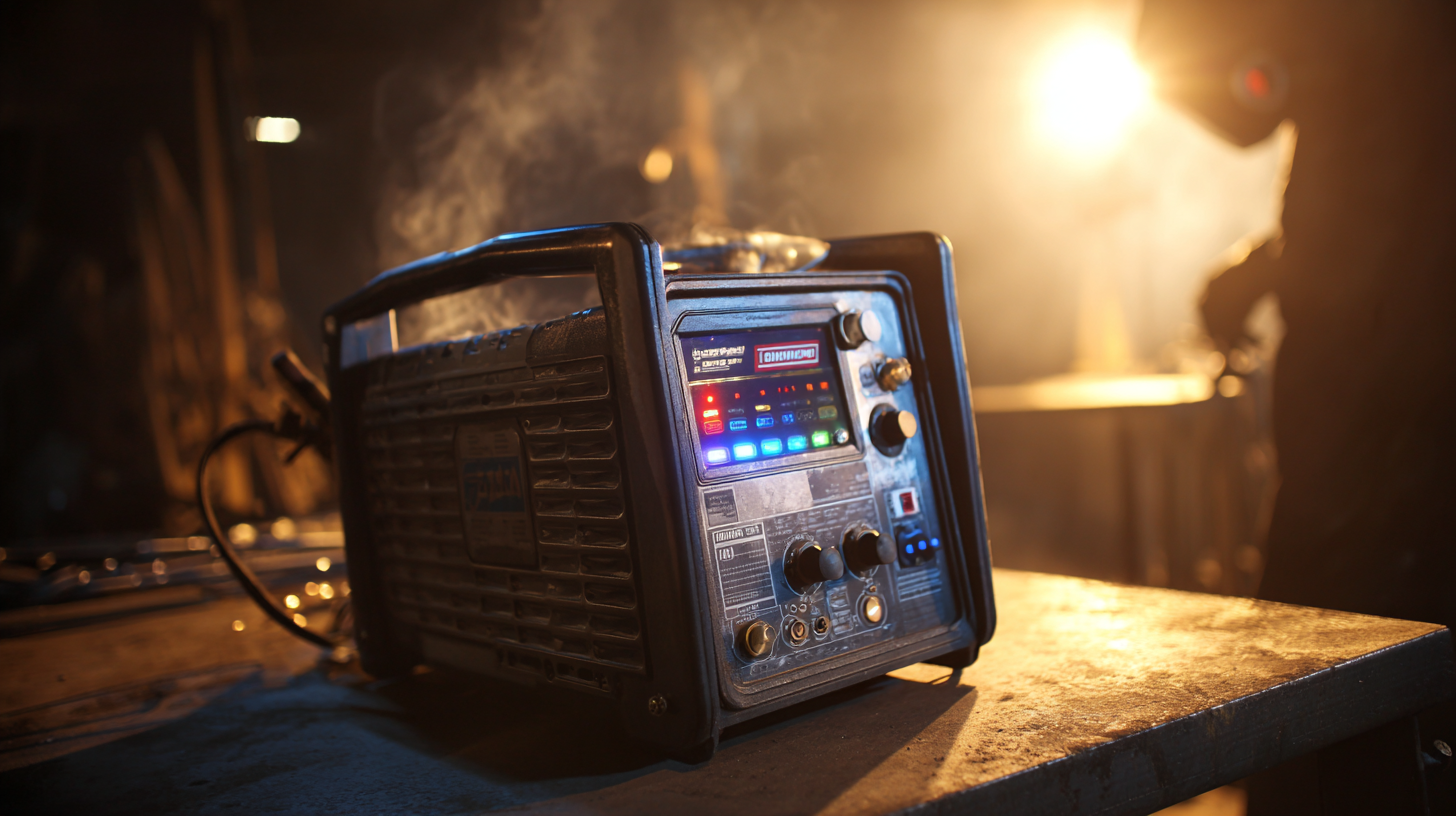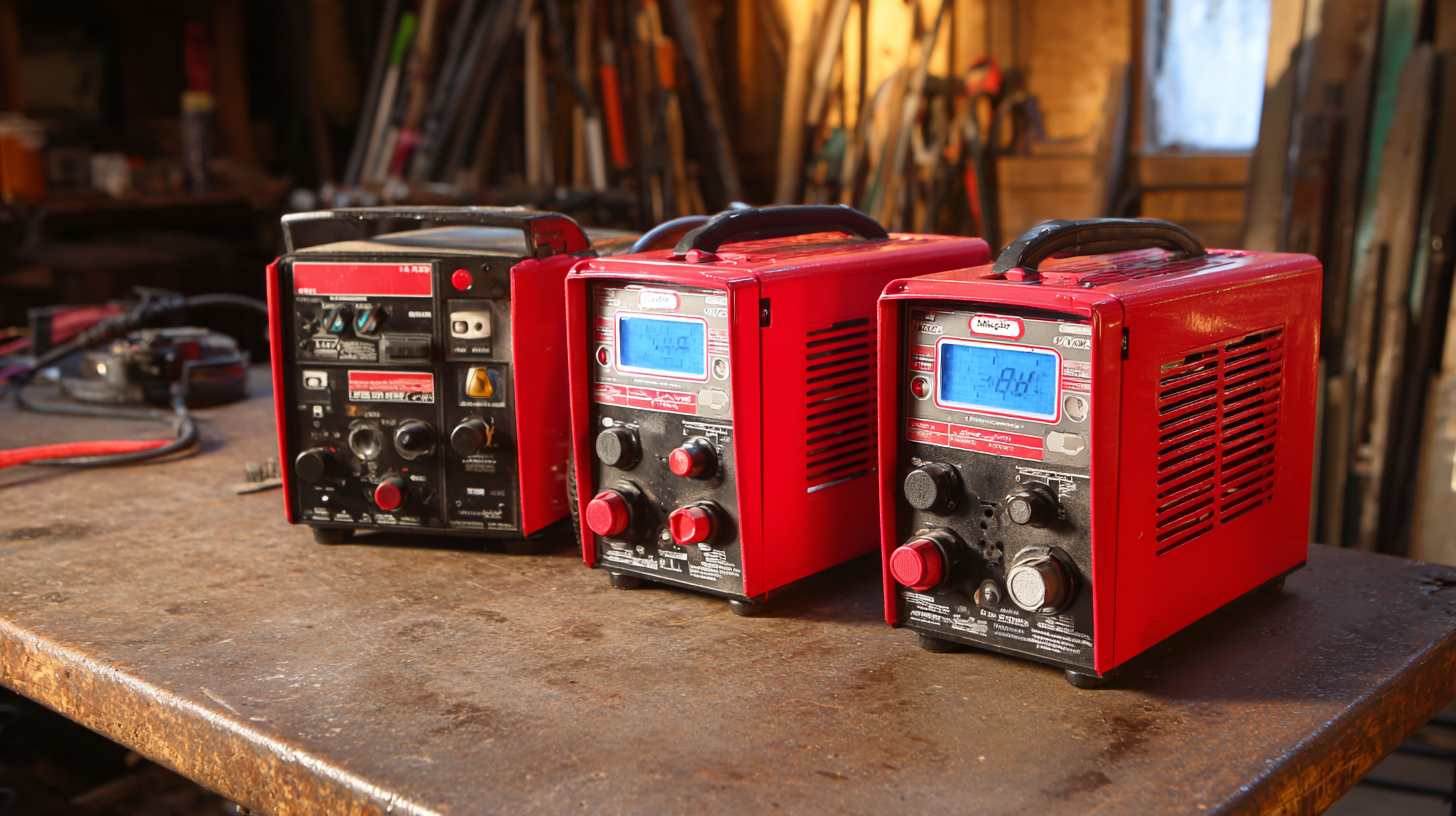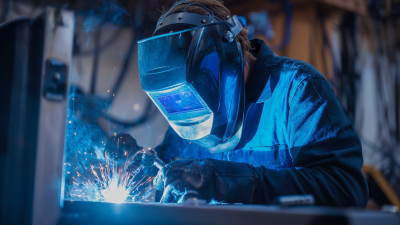In recent years, the welding industry has witnessed a significant transformation with the advent of advanced technology, making the choice of equipment more crucial than ever. Among various solutions available, the Inverter Welder stands out due to its efficiency, portability, and versatility. As we approach 2025, understanding the key features and industry insights behind inverter welders becomes essential for both amateurs and seasoned professionals.

This guide delves into the critical elements to consider when selecting the best inverter welder for your needs. From power output and duty cycle to ease of use and safety features, we will explore the attributes that distinguish top-performing models in the market. Moreover, we will provide insights into the current trends and advancements within the industry to help you make an informed decision. Whether you are set to embark on a DIY project or a professional undertaking, knowing what to look for in an inverter welder can significantly enhance your welding experience and outcomes.
When selecting an inverter welder, several key factors should be carefully considered to ensure optimal performance and reliability. First and foremost, the power output is critical. Most modern inverter welders offer a range from 120 to 250 amps, which is suitable for various welding applications. According to a recent industry report by Grand View Research, the global inverter welder market is expected to grow significantly, driven by increased demand in construction and automotive sectors, which emphasizes the importance of choosing a welder with sufficient power for specific tasks.

Another essential aspect to consider is portability. Many users prefer inverter welders due to their lightweight and compact design, making them easier to transport to different job sites. Research from MarketsandMarkets indicates that the rise in DIY projects and hobbyist welding is fostering this demand for more mobile welding solutions. Additionally, features like digital displays for monitoring settings and auto-set functions for different materials can enhance usability, ultimately improving the quality of welds produced.
In summary, understanding the power requirements and mobility aspects along with additional user-friendly features can significantly impact the selection process of the best inverter welder for your needs.
When selecting an inverter welder, several essential features make a significant impact on its performance and usability. Firstly, the amperage range is crucial, as it determines the thickness of the materials you can weld. A welder with a broad amperage range enables you to tackle a variety of projects, from thin sheets to thicker workpieces. Furthermore, the duty cycle is an important specification to consider, as it indicates the amount of time the welder can operate continuously before needing to cool down. A higher duty cycle is beneficial for longer welding tasks, ensuring efficiency and reducing downtime.
In addition to these specifications, advanced features such as inverter technology play a critical role in enhancing usability and precision. Inverter welders typically provide a stable arc and improved energy efficiency, making them a suitable choice for both amateur and professional welders. User-friendly interfaces, including digital displays and adjustable settings, enhance control over the welding process, allowing for better outputs. Additionally, features like hot start and anti-stick functions can make welding easier, preventing electrode sticking and ensuring smooth initiation of the arc. These considerations are vital in choosing the best inverter welder that meets your specific needs.
When it comes to choosing the best inverter welder, understanding the nuances of different brands is crucial. Leading brands like Miller, Lincoln Electric, and ESAB stand out for their innovation and reliability. Miller is known for its user-friendly interface and durability, making it a favorite among both hobbyists and professionals. Lincoln Electric offers a robust range of models that excel in performance, particularly for heavy-duty industrial applications. ESAB is recognized for its advanced technology and versatility, ideal for users looking to tackle various welding processes.
**Tips:** When comparing brands, consider the warranty and customer support they offer. A good warranty can save you from future expenses, while responsive customer service can make troubleshooting much easier.
Additionally, pay attention to the features that cater specifically to your welding needs. Some brands may provide models with advanced settings for TIG, MIG, or stick welding, while others focus on portability and ease of use. It's essential to match your personal requirements with the technical capabilities of each brand to make an informed choice that enhances your welding efficiency.
**Tips:** Before making a purchase, read user reviews and comparison articles. Real-world experiences can provide insights that technical specifications may not reveal.

As we approach 2025, inverter welder technology is set to evolve significantly, influenced by key industry trends. A recent report from MarketsandMarkets projected that the global inverter welding machine market is expected to reach $2.8 billion by 2025, driven by the growing demand for efficient and eco-friendly welding solutions. This surge is largely due to advancements in inverter technology, which allows for more precise control of the welding process, ultimately leading to higher quality welds and reduced energy consumption.
Another pivotal trend is the integration of smart technology into inverter welders. According to a study by ResearchAndMarkets, the adoption of Industry 4.0 practices is expected to increase the demand for automated welding solutions, enhancing productivity and minimizing human error. Features such as real-time monitoring and predictive maintenance are becoming increasingly prevalent, with an expected growth rate of 15% in smart welding machine deployments over the next few years. This shift not only optimizes operational efficiency but also aligns with the overarching goal of sustainability within the industry, as companies strive to reduce waste and energy costs.
When selecting an inverter welder in 2025, it’s crucial to consider user reviews and feedback, as these insights can significantly enhance your purchasing decision. According to a recent survey conducted by Welding Journal, approximately 75% of users prioritize power performance and duty cycle when reviewing inverter welders. Models that offer a duty cycle of at least 60% at 200A are often highlighted as the best choices by experienced welders, suggesting that durability and reliability are common themes in user satisfaction.
Additionally, features like portability and ease of use are vital for those working on various job sites. A report by the American Welding Society indicates that 68% of professionals prefer lightweight options under 50 pounds, as they facilitate easy transportation without compromising on power. Top-rated models often incorporate advanced features such as digital displays and memory settings, which users find invaluable for precision and efficiency. By focusing on these aspects, prospective buyers can ensure they choose an inverter welder that not only meets their technical requirements but garners favorable reviews from the welding community.






